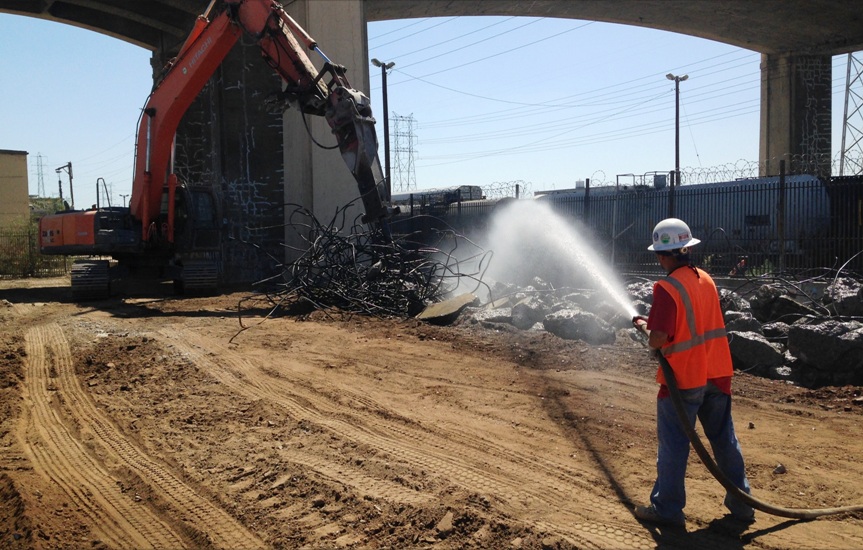Construction on the $449 million Sixth Street Viaduct Replacement project in Los Angeles is moving forward with intersection improvements near the existing bridge in preparation for the installation of a load test pile to help confirm geotechnical data for foundation design.
Built in 1932, the Sixth Street Viaduct was deemed unsafe and in need of replacement due to a rare chemical condition called Alkali Silica Reaction (ASR) that is affecting its cement supports and weakening concrete.
As one of the most iconic and famous bridges in the city, the span is a vital connection between the Arts District on the west side of the Los Angeles River and the historic neighborhood of Boyle Heights on the east side. The old structure spans nearly 3,500 ft across the river and has been used to represent the rough and tough underbelly of Los Angeles in numerous music videos, TV commercials and movies, including a couple of Arnold Schwarzenegger "Terminator" films.
The design of the new bridge, known as “The Ribbon of Light,” was created by Los Angeles architect Michael Maltzan, winner of the city’s international design contest in 2012. Maltzan is part of the HNTB design-build team, along with contractors Skanska and Stacy and Witbeck. TY Lin International is providing construction management; CH2MHill is the program management consultant; and the project owner is the City of Los Angeles Bureau of Engineering.
The replacement is the largest bridge project in the history of Los Angeles and when complete, the new signature bridge will be an iconic addition to LA’s skyline and the Los Angeles River as it helps improves mobility and connect communities.
The project, which broke ground last February, is currently finishing up improvements to intersections near the bridge that will help make traffic flow more efficient during the three years it will take to construct the new viaduct. Crews are also currently completing the demolition of buildings along the north footprint of the viaduct as well as performing utility relocations in preparation for the demolition of the existing viaduct, which will take place in early 2016.
Julie Allen, P.E., principal engineer on the project for the Los Angeles Bureau of Engineering, says the replacement project poses a fascinating coordination challenge.
"The Sixth Street Viaduct spans a freeway, 18 railroad tracks, and the Los Angeles River," she says. "Demolition of the existing viaduct and construction of the new viaduct must be coordinated with freeway closures, railroad operations, and rainy season restrictions, which have significant effects on the construction schedule."
She says the new viaduct is very complex and is designed to withstand seismic activities through the use of a "triple friction pendulum bearing" in each column. "All connections from the viaduct structure to adjacent abutments and bicycle/pedestrian ramps require isolation joints that allow for lateral movement up to 30 inches," she says.
Allen says the project's next milestone is the installation of load test pile in the next two months and demolition of the viaduct structure will begin in early 2016. Work is slated to complete in early 2019.
The project is being delivered through the Construction Manager/General Contractor (CMGC) delivery method. This is the first CMGC project with Federal Highway Bridge Program funding and Caltrans oversight in the State of California.
Replacement of LA's Iconic Sixth Street Viaduct Moves Forward


Post a comment to this article
Report Abusive Comment